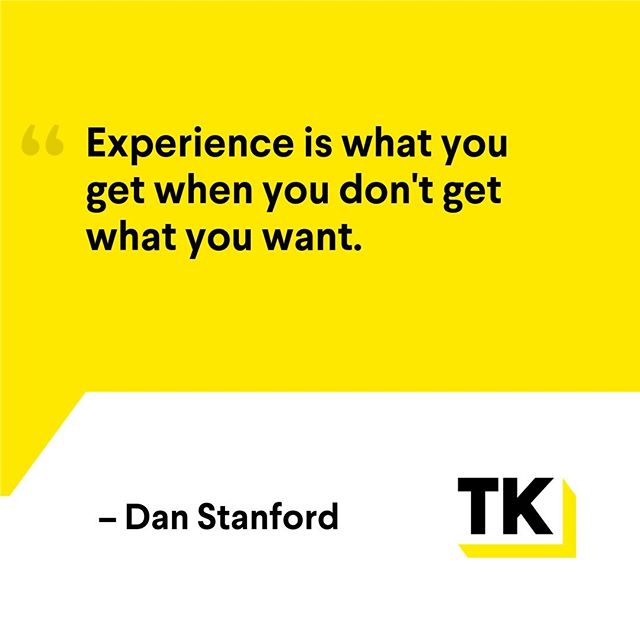There comes a time in every Founder’s life when you start to wonder, “should we be moving upmarket in our SaaS business?”
Maybe it’s a random thought because you want to grow faster.
Maybe you just closed that dream enterprise customer.
You start to think about the potentials and possibilities of moving upmarket… Then all of a sudden the dream becomes bigger.
In this blog, I’ll explain what moving upmarket in SaaS means and walk you through the three principles you need to know so that you can navigate the path to upmarket greatness and serve at a larger scale.
What does Moving Upmarket mean?
Moving upmarket in SaaS entails shifting your focus from serving small to medium sized businesses (SMBs) to targeting larger, more established enterprises. These larger companies have bigger budgets, resulting in higher annual contract values, and a much higher customer lifetime value (LTV).
This strategic decision can yield a host of benefits for your SaaS business, including increased revenue generation, expansion of your customer base, and the solidification of your position as an industry leader.
But, embarking on this journey requires substantial investments across various fronts:
- Enhancing product development
- Bolstering sales, marketing, and customer success initiatives
- Catering to the unique needs of enterprise clients
Your SaaS business can successfully navigate the transition and thrive upmarket only through meticulous attention to these key areas. But, how do you decide to move upmarket and start the transition process?
Moving Upmarket in SaaS
I remember a pivotal moment in ToutApp’s history when we secured a license deal with a publicly traded company. At that time, we were still a small team that was primarily focused on Product-led growth, with our sales efforts just starting to ramp up.
It was a $1.2M deal. One customer. One SaaS platform.
At the time, it was wild to me that ONE deal could bring in that much. We thought, “If a company of that caliber sees value in ToutApp, imagine the potential for serving other remarkable companies.”
I then realized we couldn’t solely rely on companies stumbling upon us anymore. We needed to actively pursue larger, more established clientele.
The decision to move upmarket was crystal clear, but it wasn’t an overnight transition. It definitely involved plenty of trial and error, which made it a valuable learning experience. So, I’ll be sharing the three principles that guided us along this path of moving upmarket in hopes they can assist you in navigating this transition.
Principle 1: Are You Already Being Pulled Upmarket?
Are you feeling the pull towards bigger deals and larger clients? It’s a question every SaaS business must confront as they consider moving upmarket. Take a step back and assess if the market is already nudging you in that direction. It’s crucial to discern whether you’re being naturally drawn into this realm or if it’s a conscious strategic move.
Are larger companies showing interest in your offerings? Are you noticing an uptick in deal sizes with enterprise-level clients? Acknowledging these signs is key. If you’re being organically pulled by market demand, you’ll need to leverage this momentum.
When You’re Not Being Pulled Upmarket
When you’re already experiencing traction with bigger players, it’s a positive indication that the market sees value in your SaaS solution. In these cases, aligning your strategy with this momentum can be highly beneficial to the growth of you SaaS company.
However, if the upmarket pull isn’t evident yet, don’t worry. It’s an opportunity to explore and test the waters and gauge the alignment between your solution and the needs of enterprise companies. Are they facing similar urgent and important challenges that your product addresses?
If you’re looking to move upmarket, you should start by engaging with slightly larger companies to gauge their interest and needs. Understand the lay of their land, their pain points, challenges, and requirements.
When you conduct these conversations, you can assess whether your offering resonates with the unique demands of enterprise-level organizations. This probing phase provides valuable insight into market fit and informs your strategic decisions regarding product development, positioning, and go-to-market strategies, ensuring a solid foundation for a successful upmarket journey.
Principle 2: Do You Understand the Competitive Dynamics?
Some companies are incredibly committed to being PLG. So much so that they refuse to venture into the upmarket territory. Unfortunately, sticking to this stance could leave them vulnerable to becoming overshadowed by competitors who do serve larger enterprises.
To navigate the transition successfully, it’s essential to grasp the intricacies of competitive dynamics. But, how exactly do you conduct a comprehensive competitive analysis?
1. Are you the only one?
One scenario I’ve encountered is when a SaaS product is so unique that it naturally attracts mid-market and enterprise companies, pulling the business up simply because there’s no comparable alternative in the market.
Most of the time, that is not the case. There may already be monster companies serving larger companies in the market. Recognizing that you’re likely not the sole player in this space will help you make the decision to move upmarket or differentiate yourself to move upmarket.
These monster companies may already be entrenched in serving enterprise clients, posing significant competition. Find out who these players are.
2. Who are the other players in the space?
Once you’ve found out whether you have competition or not, it’s time to dive deeper into understanding who your competitors are in the upmarket space. Are there other players in the space vying for the same market segment, or do you have a unique position?
Identify the direct competitors offering similar solutions as you AND indirect competitors who address similar needs through alternative means. Analyze their strengths, weaknesses, and market positioning to gain valuable insights into the competitive landscape. When you assess the playing field, you can better strategize how to differentiate your offering and carve out a distinctive niche within the upmarket segment.
3. How do you differentiate?
Differentiation is key. Reflect on what sets your SaaS product apart from the competition. Consider unique features, integrations, or if your value proposition resonates with the needs and preferences of enterprise clients.
For instance, during my time at ToutApp, our integration with Outlook proved to be a significant draw for larger companies. Purposefully carving out a niche that caters to the specific needs of upmarket clients can be a game-changer. Position your SaaS solution as a compelling choice amidst the competition.
Keep your focus on highlighting your strengths and value proposition through targeted messaging, positioning, and branding efforts. The best way to do this?
Revamping your Go-To-Market strategy:
- Ideal Customer Profile
- Messaging, Strategic Narrative, Manifesto
- Consistent set of sales and marketing actions
If you’re still working on creating a proper scalable GTM strategy, grab a complimentary copy of my 5-Point SaaS Growth Strategy Guide below.
Principle 3: Is Your Company Ready?
Some SaaS companies strictly adhere to a product-led growth model and resist the allure of the upmarket. Others rush into the transition without a thorough understanding of the demands and nuances at play. Striking a balance and making informed decisions based on company readiness and market dynamics can save you the agony and wasted resources in the long run.
Moving upward in SaaS involves more than just a shift in sales tactics; it’s a complete overhaul that touches every aspect of your company. It’s not merely about tweaking sales strategies but a holistic re-evaluation of product offerings, market approaches, pricing, and risk management protocols.
This evolution requires a deep understanding of the unique needs of your newfound customer base. It requires a strategic realignment with a different market landscape and Ideal Customer Profile (ICP), brimming with unique demands and opportunities.
Here are several factors to consider your SaaS business’ preparedness to move upmarket:
1. Product and Feature Specifics
As you climb the market ladder, anticipate the need for deeper integrations, audit functionalities, and customer features. BUT, tread cautiously to avoid the trap of building tailored features for every single deal. Strive to develop features that resonate with a broader spectrum of mid-market and enterprise clients to avert becoming a bespoke development agency.
2. Go-To-Market Strategy Refinement
Tailor your Go-To-Market (GTM) strategy to suit the nuances of mid-market and enterprise clients. This entails upleveling your messaging and positioning to align with the grander narrative of your company while catering to this new market segment. While this may be labor-intensive, the rewards are substantial.
3. Pricing Strategy Overhaul
Align your pricing strategy with the expectations of mid-market and enterprise customers to safeguard against potential devaluation of your product. Adapting your pricing model to resonate with their established norms fosters trust and credibility, paving the way for lucrative partnerships.
4. Strengthening Security and Legal Frameworks
Elevate your security agreements, legal documentation, and Master Services Agreements (MSA) to meet the rigorous standards of enterprise clients. Establishing a robust legal and security footprint is a prerequisite for competing effectively and instills confidence in your offerings.
When you’re aligned with all these factors, you fortify your SaaS business’ readiness and position your SaaS business to excel in the upmarket arena.
In Conclusion
Moving upmarket in SaaS is a multifaceted journey that demands careful consideration, strategic planning, and decisive action. By embracing this journey, your SaaS business can unlock new avenues for growth, revenue generation, and industry leadership.
If you’re a SaaS Founder looking to reevaluate your strategy to move upmarket, grab a complimentary copy of my 5-Point SaaS Growth Strategy Guide below. I share how you can clarify your ICP, craft your Strategic Narrative and Manifesto, and mobilize a consistent set of GTM activities across key channels. These strategies will help you build a scalable working strategy for each inflection point of your business.












